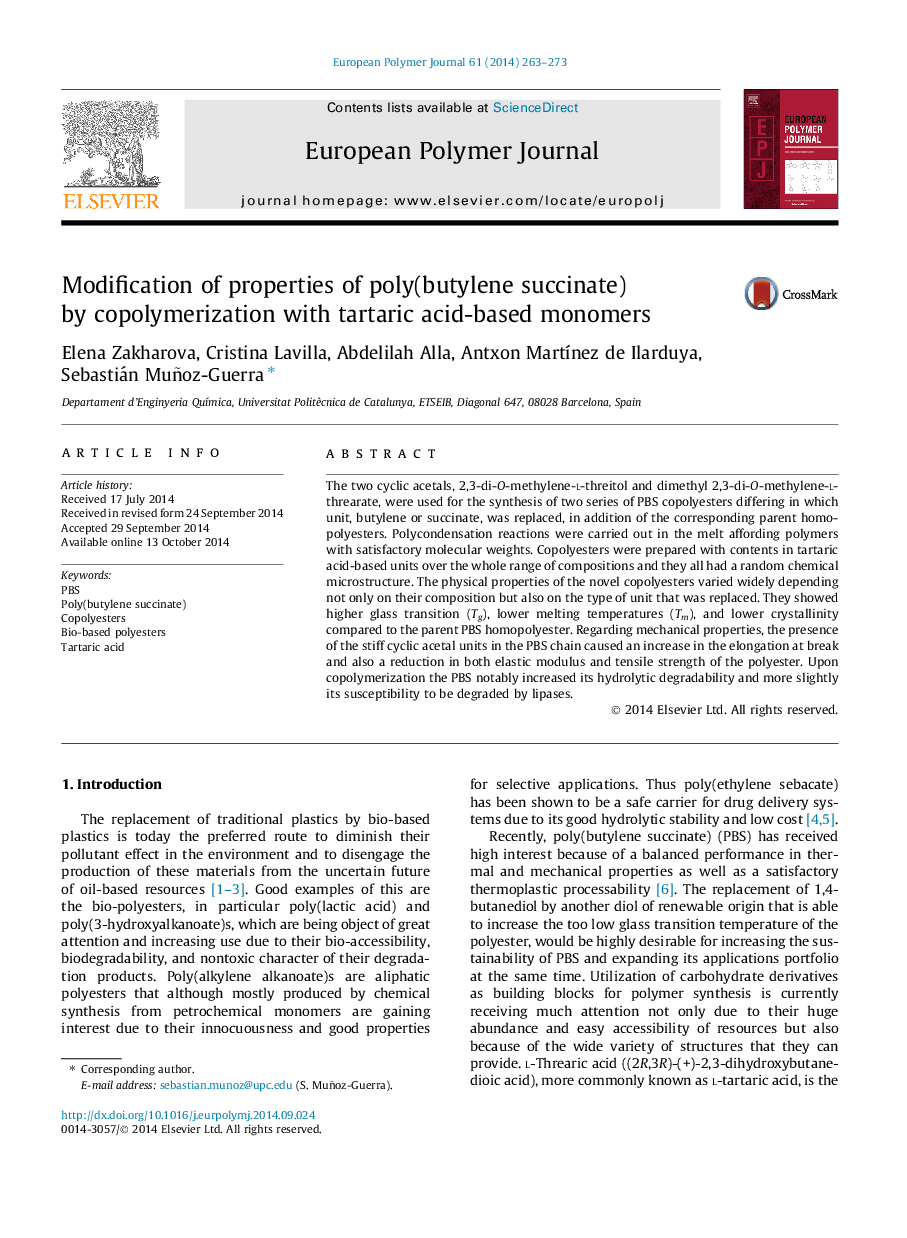| Article ID | Journal | Published Year | Pages | File Type |
|---|---|---|---|---|
| 1398015 | European Polymer Journal | 2014 | 11 Pages |
•Cyclic tartaric acid-based units are used to prepare random PBS copolyesters.•The tartaric acid-based PBS copolyesters are prepared by melt polycondensation.•The tartaric acid-based PBS copolyesters have higher Tg than PBS.•The tartaric acid-based PBS copolyesters display enhanced biodegradability.•The homopolyester made of 1,4-butanediol and tartaric acid has Tm ∼ 100 °C and Tg ∼ 0 °C.
The two cyclic acetals, 2,3-di-O-methylene-l-threitol and dimethyl 2,3-di-O-methylene-l-threarate, were used for the synthesis of two series of PBS copolyesters differing in which unit, butylene or succinate, was replaced, in addition of the corresponding parent homopolyesters. Polycondensation reactions were carried out in the melt affording polymers with satisfactory molecular weights. Copolyesters were prepared with contents in tartaric acid-based units over the whole range of compositions and they all had a random chemical microstructure. The physical properties of the novel copolyesters varied widely depending not only on their composition but also on the type of unit that was replaced. They showed higher glass transition (Tg), lower melting temperatures (Tm), and lower crystallinity compared to the parent PBS homopolyester. Regarding mechanical properties, the presence of the stiff cyclic acetal units in the PBS chain caused an increase in the elongation at break and also a reduction in both elastic modulus and tensile strength of the polyester. Upon copolymerization the PBS notably increased its hydrolytic degradability and more slightly its susceptibility to be degraded by lipases.
Graphical abstractFigure optionsDownload full-size imageDownload as PowerPoint slide
